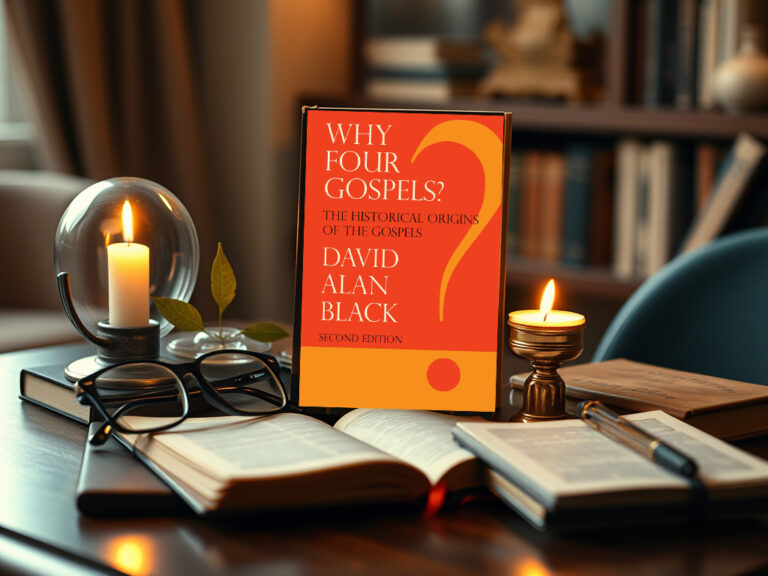The Gathering of the Eternal Five – The Endless Story
CHAPTER EIGHTEEN
THE ENDLESS STORY
Time is a relentless task master that takes no holidays. The story of Jesus would be a guest at countless backyard discussions by friend, kin and convert alike. History making personalities would enjoy their lives and leave behind versions of those fateful days. Story tellers and time would embellish, reduce and re-tell the story to fit their needs. When all is said and done, no other story has ever been told in so many languages, in so many lands by so many campfire story tellers and renowned scholar alike. We must remember that in due process many of the true facts of the day changed by legitimate translation. Alexander the Great ordered all Hebrew works be converted into Latin. Translation, folklore, legends and tradition claim their birthplace from altered versions of the facts.
The lives of personalities around the Nazarene deserve their place in history highlighted for the modern reader. This humble author makes an effort to touch on those not to be forgotten individuals. Renowned astrologers went beyond the surly bonds of earth to give the mother of Jesus and two of her faithful companions an eternal place of honor. No greater shrine could be provided anywhere or by anyone. Within the star studded constellation known as “Orion’s belt” glow three bright stars in triangular formation. They are recognized by many nations as “the three Marys. Mary His mother, Mary Magdalene and Mary Salome.
Jesus called his mother “the perpetual virgin.” She never remarried. The offspring of her husband Joseph from his previous marriage were her only children. The apostle John took care of her near the city of Ephesus until Mary decided to brave the Hebrew persecution and moved to the home she inherited close to Gethsemane. History itself is unsure of the precise location of her demise. Some even say she went to meet her fate in Bethlehem.
She walked through the valley of the shadow of death with no fear. For she knew God was with her. In her sleep the angel of the Lord came to visit the Virgin Mary once again. Gabriel informed her that her mission on earth was complete and that she would soon pass through the portals of life into the realm of heaven. Magically and without being called from near and far the apostles all gathered at her bedside until her final hour. It was said she died on the ninth hour of the day as her only son did. The exact year remains in debate, it is 48 or 49 A.D. (Anno Domini) It is written that Jesus came to his mother in her final hours advising her not to worry. Scholars and historians would argue for countless years as to the exact location of her death. It is properly recorded that her body was wrapped in linen and installed in a wicker coffin then placed in a prepared grave by faithful apostles. From there her body vanished. It was said she was ascended to heaven transformed from human to cherished angel and to dwell in many hearts. Proof remains positive since her body was never found. A shrine to her life was built from her former home in Ephesus and another close to Gethsemane. They have become magnets for pilgrims that come from all over the world to pay homage to the mother of the son of God. The humble Mary of Nazareth.
Pontius Pilate served in Judea from the year 26 to 36 A.D. Rome grew displeased with his service after his Roman sponsor died. He was recalled to Rome in dishonor by Emperor Caligula and was castigated for his brutal handling of an unruly crowd of pilgrims at Mount Gerizim. Emperor Caligula banished him to Vienne in Gaul. The subsequent fate of Pilate and Claudia remains a puzzle of fact and fiction. Some even say he and Claudia finally accepted Jesus as the savior of mankind and there are shrines and locations attesting to it as fact. Unclear records state that the most famous of Judean procurators died in the year 39 A.D. of unknown causes. Some claim suicide, others argue for natural death. His call to Rome left Judea in lawless disarray. It would take time for Rome to appreciate the qualities of their ‘Praefectus”, Lucius Pontius Pilate. Elevation by Rome to the status of Praefectus remains a high level honor shared by very few. In 1962 proof of such recognition was discovered by archeologists in Caesarea, the former home and headquarters of the procurator of Rome in Judea. A limestone block somewhat damaged but legible read :
S Tiberievm
(PO)ntivs Pilans (Prae)ctvs Ivda(ea)e
( Pontius Pilate “Praefectus” Judea)
In a process of arduous elimination the procurator of Judea became Marullus. No amount of effort would ever equal the examples of Pilate. In his youth he accepted his position as a third class knight from central Italy but fought and won his way to far greater honor.
It remains safe to say that Claudia was a prophetess of Jesus. She attended lessons at the temple of Isis and learned much of what Jesus practiced. She was a close friend of Mary of Magdala from which other vital lessons were learned. She suffered from an ability to foresee the future and wanted relief from the agony it often produced. Over all she loved her husband. He was her teen age idol, her teacher, her protector, her companion in countless happy times and the father of her children. For better or for worse, where he went, she followed.
While Pilate was sitting on the judicial seat, his
Wife sent him this message: “Don’t have anything to
Do with that innocent man, for I have suffered a
great deal today in a dream about him.”
Matthew 27: 19 NIV
Heroes and heroines are not born from empty titles but from valiant deeds. As an honorable citizen of Rome, Claudia invited danger by her obvious devotion to a penniless carpenter from Nazareth. Rome was entirely too high and mighty to accept a mother’s gratitude to that penniless carpenter for healing her beloved son’s club foot. She displeased her husband by dismissing his God Jupiter, as a worn-out illusion of times gone by. The son of God was gathering his strength daily from faithful believers and there is awesome power in faith. She experienced that faith herself when she searched for Jesus to touch her son. Her infinite gratitude was her reason for retelling all she knew about the Nazarene to any one that would listen or ask.
With Pontius Pilate gone the Hebrew council strengthened their efforts to exile Lazarus, Martha and namely Mary of Magdala, Apostle to the Apostles of Jesus Christ. Like it or not, the Hebrew council had to accept what rang from so many tongues. Jesus, the Christ. The Christian movement was growing rapidly and nobody could stop it. Five women placed their faith and devoted their lives to Jesus and were in fact the first to be called “Christians.” Followers of the Christ. It was a life threatening time to oppose the angry power of the Hebrew council. Many lives were painfully sacrificed for nourishing the growing faith in the Nazarene.
At the summit of his pain, five women stood at the base of the cross on that fateful day. The magnitude of their faith could feel the soul of Jesus rising from his body to dwell in his father’s home.
The effort to exile Mary Magdalene and her family ceased to be a religious issue. It was their properties that attracted more than one greedy ambassador of unlawful schemes. They complained grieviously to the new procurator that Pontius Pilate had turned his back to their legal claim to the properties. No record was ever found of Tiberius instructing Pilate to intervene in their stealing Mary of Magdala’s family properties. The council claimed the family was guilty of Blasphemy and demanded they be deported. In due process and the right amount of gold invested in the new procurator’s comfort, their wish was granted.
In the year of our Lord 42 A.D. Lazarus, Martha, Magdalene, Bartholomew, their uncle Joseph of Arimathea among others were cast to sea in a boat without sails, rudder, food or water. Oh, they suffered, they suffered greatly but plans for their lives were not complete yet. Their craft was guided close to the mouth of a river called, the Petite Rhone. At that location an ancient village called “Ra” was inhabited by reserved and cautious people with little regard for settling strangers. The village “Ra” became home to the group. Their father Syrus had not raised his children to be lazy. Lazarus, Martha and Magdalene were soon preaching and doing what they could to ease pain and bring comfort to the young, sick and elderly. With time and considerable effort they won the populations trust enough to listen to their words and accept their works of charity. The village would later be named “Notre dame de Ratis” Our lady of the Boat in honor of Magdalene of Galilee. She lived and did the work of Jesus in the vicinity of saint-maries dela Mer in the area of Camarquais. Within these historically noted places Mary of Magdala lived as a stranger with no friends and in poverty. Her wealth was consumed by charitable works in Judea and the remnants devoured by the scheming Jewish elders. It is written and physical evidence exists that Mary of Magdala, was named Magdalene by Jesus since he exalted her above other Marys, she was unique. He paid honor to her devotion to him as well as his disciples.
Solitude took charge of her life and she withdrew to a cave high in the Saint-Baume Mountains. There she meditated and communed with Jesus while angels provided spiritual sustenance on which she existed. The year of her death is uncertain. Her place in history is guaranteed by her devotion and contribution to the birth of Christianity in France.
And, if our faith had given us nothing more
Than these examples of all womanhood,
So mild, so merciful, so strong, so good,
So patient, so peaceful, loyal, loving, pure
These were enough to prove it higher and truer
Than all the creeds the world has known before.
Words by the American poet, Longfellow
With admirable effort and intestinal fortitude Lazarus rose to be a high level leader of the Christian movement. He was granted permission to lie at rest in Bethany. A shrine in his name is visited by thousands every year enriching the Jewish coffers considerably. Civilian visitors, ministers and pilgrims from all over the world visit the site yearly. It has been rightfully said that Lazarus returned to Judea in glorified triumph to rest in peace.
Mary Salome, the unbeliever never reached the grade of disciple. She was nonetheless a dedicated supporter always willing to serve the needs of the men that followed the teachings of the Nazarene. She was the faithful wife of Zebedee and had a home and husband to tend to. Therein rested her prime responsibility and a married woman could not be allowed to follow a group of men that often camped out in the wilderness. Her two sons John and James became known disciples of Jesus and history honors their place alongside the Nazarene as their mother wished.
Bernice, the pious Jewish woman never had ambitions for a seat in the halls of glory. It was whispered in private corners that she suffered from a bleeding disorder for a number of years. When she finally decided to appeal to Jesus for a cure she was not able to reach him. Jesus heard her lament before she spoke of it and turned to assure that her malady was resolved. That act of kindness from Jesus gained her complete devotion. At the crucifixion she was shoved by the mob to the forefront of the bloody drama. Seeing Jesus so brutally penalized brought agonizing pain to her as well. She braved lance and shield to render Jesus some help and could only wipe his face with her head scarf. Sweat, tears, blood, dirt and stones covered the face of the son of God. Adding torment to this were the vile insults from cold hearted individuals. Some of which would even spit on a helpless man dragging a cumbersome cross at the end of his strength. Brutally she was shoved away from the convict into the maddened crowd. Roman soldiers could care less for a Jewish woman past her prime. The discovery of the image of Jesus on her head scarf came later, in the comfort of her home. Bernice deserved more than a merit badge for her courage. Discovering her veil contained the healing power of Jesus is well documented and people were healed by viewing the sacred image. History records that Emperor Tiberius owed gratitude to the head cloth of a Jewish woman since her sweat rag healed him also. That object of reverence is said to be kept and guarded by the Church of Rome. Time pays homage to her devotion and effort to help the son of God. She is revered as “Veronica of the Veil” by Greek translation to this day.
Salome daughter of Herodias was instrumental in the beheading of John, the Baptist. Her possible visit to Golgotha granted her peace of mind and she later answered to the marital call of Philip, the Tetrarch of Ituraea and Trachonitis. The marriage did not last long, Philip was old and it made gossipers laughingly happy to say that “Salome was too much woman for such an old man”. Along came Aristobulus, son of Herod of Chalcis. Wealthy, healthy, handsome and able to meet the physical demands of a sensuous young woman. They had three children attesting to that as fact. Profiles of their children appeared on gold coins of the time. History favors the famous dancer with a near clear record of her entire life. Her presence at the crucifixion is likely but not historically proven.
For reasons ranging from self-serving, (false reports for money) erroneous leadership and greed the Hebrew council continued to hound the followers of Jesus. Volumes of atrocities against early Christians colored the pages of history in vivid red due to Hebrew accusations. Shimon was his real name later known as Shimon Peter and finally just Peter. He too was an apostle to the remaining apostles and a leader head to new converts.
Peter would suffer much from the Power of Emperor Nero, a domineering Roman with demented illusions of greatness. By plot, ploy and scheme Nero was convinced that the maladies of Rome all stemmed from the Christian movement, a cult of ignorant low class individuals with no real value to society. The Hebrew council could reach far and deep to install thoughts and ideas in fertile minds. Then pave the way to reality with gold in hand. And so it is written that Peter, now a high ranking official in the Christian movement would be brought to trial during Emperor Nero’s time. Some people argue that Peter was jealous of the adoration Jesus received in life and for dying in such a unique way. Others would claim that Peter’s devotion was without blemish. It was rumored that Peter stated “no greater honor could befall him than to die as his lord and savior did.” Others would say that he claimed “not to be worthy of dying as his savior did.”
To which twisted Roman minds had an instant solution. “We can fix all that, so you may be honored even more.” The Roman mentality was capable of inventing torturous ways to execute a man. Peter being crucified upside down would be child’s play to a sated Roman mind. Deprived of all worldly possessions he followed in the death example his Lord and savior left behind. Near nude his hands and feet were secured to crude timbers and left to bear his cross alone. Roman documents attest to its reality and record the year of Peter’s death upside down in Rome as being the year c 64 A.D. Little did the Romans know that the name Peter in the Hebrew language means “Rock.” The “Rock” of Jesus continues to fulfill his mission even today.
The glory of Jesus is everlasting. Partly due to victories won without sword, lance or shield. The personalities of five women in this work emphasize that their only weapons were faith and devotion. Two powerful elements when poised in a unified direction. Essentials that can change lives, alter paths, Bring joy to injured hearts and strengthen the soul. They are treasures left to us by Jesus.
Physically strong and mentally keen Onofrio suffered much emotional stress from his tugging wish to lunge forward into field near and far to retell the story of Jesus. He suffered painfully from a common human weakness. He could not bring Senobia or his children with him. His family was raised in great comfort without the hardships of a road life. A camel herder’s camp, sleeping on the dirt, fearing snakes and scorpions, going to sleep hungry without a midnight snack were all hardships Onofrio could not put his family through. He could not bear it if his wife and children were hungry. He cringed to think of the lovely, devoted Senobia suffering through his quest. Knowing she would suffer her hardship in silence and stand by his side always proud to hold his forearm. Chin cocked high, she would tolerate and endure. The ever shifting sands would transform her lovely face into a mask of hardship. Equally so, his children would age before their time. He castigated himself fiercefully for his lack of faith that God so loveth the dove of the field that he provides for them as God would provide for him and his family. He only knew the comfort his work provided and the reality of here and now. Being that he still feared God’s revenge.
No, he could not do that to his family. Fate and time were plotting against the once young man from distant Iberia. Senobia’s father, Tremiyo was now an old man struggling to stay alive. He would suffer immensely if his daughter Senobia and the near grown children all went away suddenly. His wife Camia had died and the old man lived with memories of her and his previous wife, Sintia. No, Tremiyo would not live long if he was suddenly alone. Adding burden to his fading quest would be the pain and suffering Senobia would endure knowing she had abandoned her loving father in his hour of greatest need
Only ever so briefly did he harbor thoughts of going alone. But, he could not live without Senobia. She was his right arm, his left arm and the light that brightened every day of his life. The very thought of going without her brought unbearable pain to his heart.
But, he could not discharge Jesus from his mind and heart. They lived together as one and yet as far apart as heaven is to earth. On occasion Onofrio would stop a stranger and always found ways to channel their conversation to his day at Golgotha with the son of God, Jesus of Nazareth. With his family he often traveled to gatherings honoring Jesus. He lathered his soul with what he heard and could never find justifiable reason not to contribute his day at the crucifixion to the assembly. He invested his heart and soul to his place before an audience and in all he did and as hard as he tried, he was never satisfied with his contribution. There was always something more he wanted to say. He wanted to rip out his soul and show it to the congregation so they may also feel his closeness to Jesus. The guilt he harbored from building the cross received added support with his recent failure to go afield and broadcast the works of the Nazarene. And from his silent suffering he seldom knew peace.
Time was parading past their lives in hastened pace and people would someday turn away from what he spoke of on the street corners of Yerushalayim. As so many other sidewalk ministers he would be regarded as a rambling old man with nothing better to do. And it offended him greatly when someone would toss an unwelcome coin to him. Did they not know that he was Onofrio el Segundo de Iberia, adopted son of one of the richest men in Judea? Serou Master of public works, now deceased and Onofrio was his sole heir.
Always close to home and near Senobia. Never a lack of reverence cast a shadow on his heart. He shamed himself severely for putting worldly comfort before the work at hand. Those of you that read this story will find comfort in knowing that Onofrio, el Segundo de Iberia and his lovely Grecian wife Senobia live on as the perpetual couple united in faith to the works of the Nazarene and their unfailing love. They live today in the hallways of your mind by a different name. They may be your next door neighbor or someone you know at work reincarnated to deliver a message to your heart. Where the Scarab of Egypt and the cross of Christianity met was the birth place of their love. It was Yerushalayim, the cradle of miracles.
And they found the stone rolled away from the tomb
and when they went in they did not find the body.
While they were perplexed about this, two men stood by
them in dazzling apparel; and as they were
frightened and bowed their heads to the ground the men
said to them, “ Why do you seek the living among the dead?”
Luke 24: 2-5
Away
I can not say, and will not say,
That He is dead— He is just away.
With a cheery smile and a wave of his hand,
He has wandered into an unknown land,
And left us dreaming, how very fair
It needs must be, since He lingers there.
And you — O you, who so wildly yearn
For the old-time step and the glad return,
Think of him as faring on, as dear
in the love of there as the love of here.
Think of him as the same, I say;
For He is not dead — He is just away.
James Whitcomb Riley 1849-1916
The End ?
[Previous Episode]



